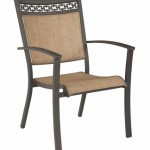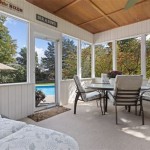Understanding Sliding Patio Door Ratings: A Guide to Choosing the Best Option for Your Home
Sliding patio doors are a popular choice for homeowners seeking to enhance their living spaces with natural light and seamless transitions between indoor and outdoor environments. When selecting a sliding patio door, it is crucial to understand the various ratings and certifications that indicate a door's performance, safety, and energy efficiency. This guide provides a comprehensive overview of sliding patio door ratings, empowering consumers to make informed decisions.
Energy Efficiency Ratings
Energy efficiency is a paramount consideration for sliding patio doors, as they contribute significantly to a home's overall thermal performance. The National Fenestration Rating Council (NFRC) assigns energy efficiency labels to windows and doors based on standardized testing methods. The NFRC label displays several ratings, including:
- U-factor (U-value): This rating measures the rate of heat transfer through the door, with lower values indicating better insulation. A lower U-factor means the door will resist heat loss in winter and heat gain in summer, reducing energy consumption and lowering utility bills.
- Solar Heat Gain Coefficient (SHGC): This rating indicates the amount of solar heat that passes through the door's glazing. A lower SHGC means less solar heat enters the home, thus minimizing cooling costs.
- Visible Transmittance (VT): This rating measures the amount of visible light that passes through the door. A higher VT value indicates more light transmission, enhancing the brightness of the interior space.
Choosing a sliding patio door with optimal U-factor, SHGC, and VT values can significantly impact a home's energy efficiency and comfort levels. It is essential to select a door with ratings that align with the climate and energy goals of the specific location.
Safety and Security Ratings
Security and safety are equally crucial considerations for sliding patio doors, especially in regions prone to high crime rates. The American Architectural Manufacturers Association (AAMA) is responsible for establishing standardized safety and security tests for sliding patio doors. The AAMA label indicates the door's compliance with specific performance criteria, including:
- Impact Resistance: This rating indicates the door's ability to withstand impact from objects like wind-borne debris or projectiles. Higher impact resistance ratings offer greater protection from vandalism and storms.
- Burglary Resistance: This rating measures the door's resistance to forced entry. Sliding patio doors can be vulnerable to forced entry, so it is important to choose doors that meet or exceed recommended burglary resistance ratings.
- Child Safety: Sliding patio doors can pose safety hazards to children, especially when it comes to pinch points. Doors with child-safe features, such as pinch-resistant tracks and safety releases, ensure a safer environment for families with young children.
Considering the AAMA ratings for impact resistance, burglary resistance, and child safety can help homeowners prioritize the safety and security aspects of their sliding patio doors.
Performance and Durability Ratings
In addition to energy efficiency and safety, sliding patio doors must be durable and reliable to withstand the test of time. Several factors influence a sliding patio door's long-term performance and durability, including:
- Material: Sliding patio doors are typically made of different materials, such as aluminum, vinyl, fiberglass, or wood. Each material has its own advantages and disadvantages in terms of durability, maintenance requirements, and aesthetics. It is important to select a material that aligns with the homeowner's budget, climate conditions, and design preferences.
- Hardware: The quality of hardware, such as rollers, tracks, and handles, plays a significant role in the performance and functionality of a sliding patio door. High-quality hardware ensures smooth operation, reduces friction, and extends the door's lifespan.
- Glazing: The type of glazing used in the door's panels influences its thermal performance, impact resistance, and overall durability. Consider factors like glass thickness, low-emissivity coatings, and laminated glass options when selecting the appropriate glazing for your needs.
By carefully evaluating the materials, hardware, and glazing used in the construction of a sliding patio door, homeowners can choose a door that delivers long-lasting performance and durability.

Patio Door Ratings Reviews Pella

Which Type Of Patio Door Is Best For Your Home Pella

Lifestyle Series Patio Doors Ratings Reviews Pella

Best Patio Doors For Busy Areas

Patio Door Ratings Reviews Pella

1500 Sliding Patio Door Ply Gem

Contemporary Sliding Doors Renewal By Andersen

Ply Gem 71 5 In X 79 580 Series White Vinyl Left Hand Sliding Patio Door With Dp 50 Rating And Lowe Glass Pd The Home Depot

Stanley Doors 60 In X 80 Double Sliding Patio Door Clear Low E 500001 The Home Depot

Sliding Frenchwood Patio Doors Renewal By Andersen
Related Posts








